_We may earn revenue from the products available on this page and participate in affiliate programs. Learn more ›
_
Best Overall
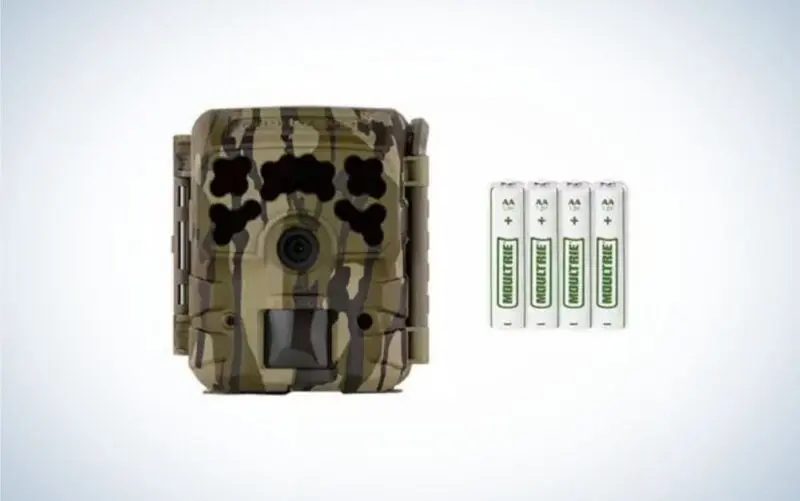
Moultrie Micro-42i Kit
Best No Glow

Bushnell Core S-4K no-glow
Best Cellular
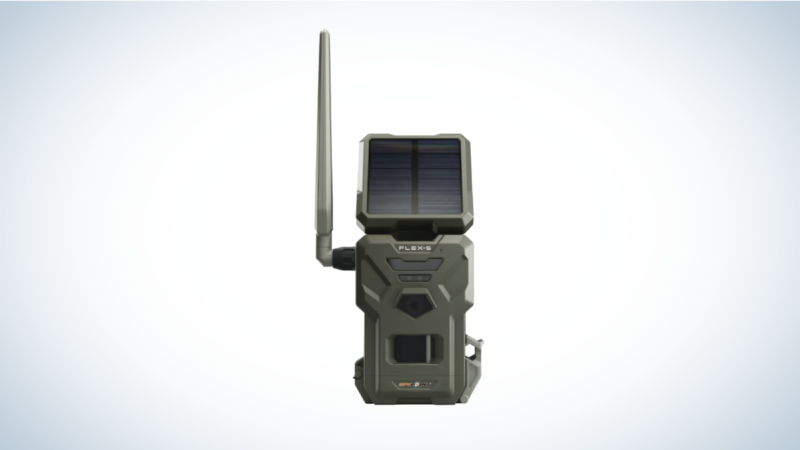
SpyPoint Flex-S
Budget trail cameras don’t mean they are bad trail cameras. Successfully using trail cams is, in my mind, a numbers game. The more cameras you have scouting for you, the better chance you have of capturing a picture of that trophy buck. That means searching for a camera that combines a budget-minded price tag with consistent performance.
Sound like an impossible dream? Sure, maybe a decade ago. But like anything involving technology, the longer companies tinker with cameras, the better they get at maximizing performance. Even better, more companies have entered the trail cam market, and competition almost always results in lower prices for consumers. In other words, we’re living in the golden age of trail cameras
, with quality models less expensive than ever before. Here are some features to look for in the best budget trail cameras and what we evaluated when we picked the models below.
The Best Budget Trail Cameras
Best Overall: Moultrie Micro-42i Kit
Best Cellular: SpyPoint Flex-S
Best for Hunting: SpyPoint Force-20
Best Under $100: Stealthcam Prevue 26
Best No Glow: Bushnell Core S-4K No-Glow
Best for the Money: Browning Dark Ops Extreme
Best Overall: Moultrie Micro-42i Kit
Best Overall

Specs
Trigger Speed: .4 seconds
Detection Range: 70 feet
Flash Range: 80 feet
Flash Type: No-glow
Camera: 42 MP
Pros
Compact size
Solid trigger speed
Good detection ranges
Cons
No-glow flash might affect night picture quality at longer ranges.
Perhaps the coolest thing about the 42i is its compatibility with Moultrie’s new “Moultrie Mobile” system (provided you add a modem), which links cameras together to send pics to your phone or tablet; in essence, you’re getting another wireless cam without paying the price. The trigger speed is very good for a budget camera, and with a compact size (3-1/4” X 3-1/2” X 2-½”), this unit can be strapped to smaller trees and still be nearly invisible to wildlife. With no-glow flash and its small size, it would be a good choice for a security camera. Moultrie also offers a two-year warranty.
Best Cellular: SpyPoint Flex-S
Best Cellular

Specs
Trigger Speed: .3 seconds
Detection Range: 100 feet
Flash Range: 100 feet
Flash Type: Passive motion sensor Infrared
Camera: 36MP
Pros
Integrated solar-panel charging
Impressive 100ft detection range
Multi-carrier Auto-connection
Great photo resolution, 36MP
Cons
Requires additional purchase of 8-AA or LIT-22 battery pack
The SpyPoint Flex-S cellular trail camera is a game-changer for both amateur and seasoned outdoor enthusiasts. The standout feature is its cellular capability, allowing you to receive real-time photos and updates directly to your smartphone or laptop. The setup is surprisingly straightforward, and the connectivity is reliable even in remote areas, thanks to its dual-SIM and optimized antenna.
The camera automatically connects to the best coverage in the area, working on most common cellular networks. I found the image quality is crystal clear with 36MP, capturing sharp and vivid photos during the day and night, thanks to the four capture modes and built-in infrared LEDs.
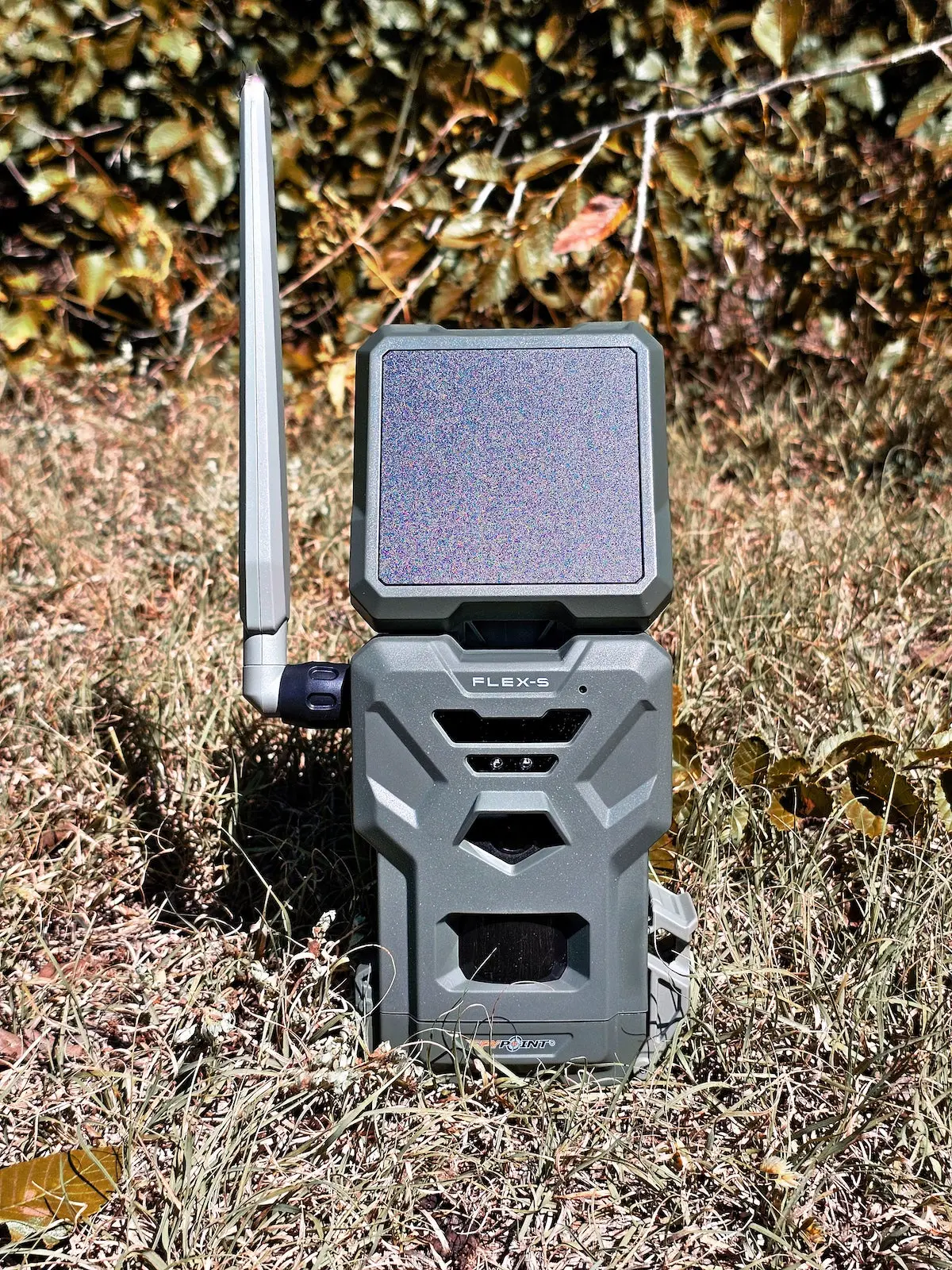
This SpyPoint trail cam has an impressively long battery life. Bethany Beathard
I also appreciate the built-in lithium battery and integrated solar panel, which means fewer trips to swap out batteries. The camera’s durability is notable, with its rugged design standing up to the elements. While it’s a bit on the pricey side for a budget pick, the SpyPoint Flex-S delivers on its promises, providing convenience and minimizing hunting property disturbances. Overall, it’s an investment worth considering if you’re serious about remote real-time monitoring with minimum habitat disruption.
Best for Hunting: SpyPoint Force-20
Best for Hunting
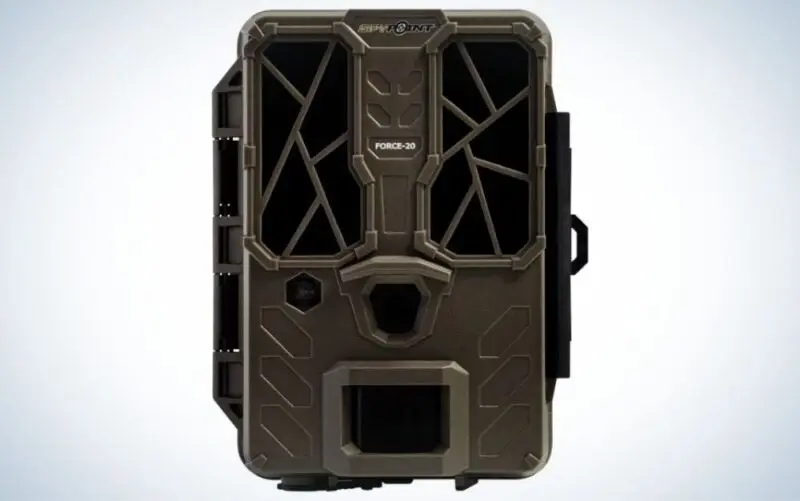
Specs
Trigger Speed: .7 seconds
Detection Range: 70 feet
Flash Range: 80 feet
Flash Type: Infrared
Camera: 20 MP
Pros
Solid trigger speed
Lightweight and easy to mount
Excellent warranty
Cons
Average detection range
The SpyPoint Force-20 trail camera is a reliable trail camera for any hunter. Having personally tested this camera in the field, I can attest to its effectiveness in capturing high-quality images and videos of wildlife. For a camera you can buy for less than $100, the trigger speed on the Force-20 is very good. Its user-friendly design makes setup a breeze, and it is compact. Right out of the package, I noticed it was lighter than all the others I tested.
Along with infrared flash technology that guarantees discreet nighttime captures, the Force-20 features a versatile range of features, including multi-shot, time-lapse, and video modes to cater to various surveillance needs. With the multi-shot mode, you can capture as many as five images per detection so you don’t miss any critical moments. The Buck Tracker technology uses artificial intelligence to identify species and genders in your photos and even notifies you immediately when a big buck crosses your camera’s path. Additionally, the time-lapse schedule is fully customizable—you can program it to align with your specific time preferences and monitoring preferences.
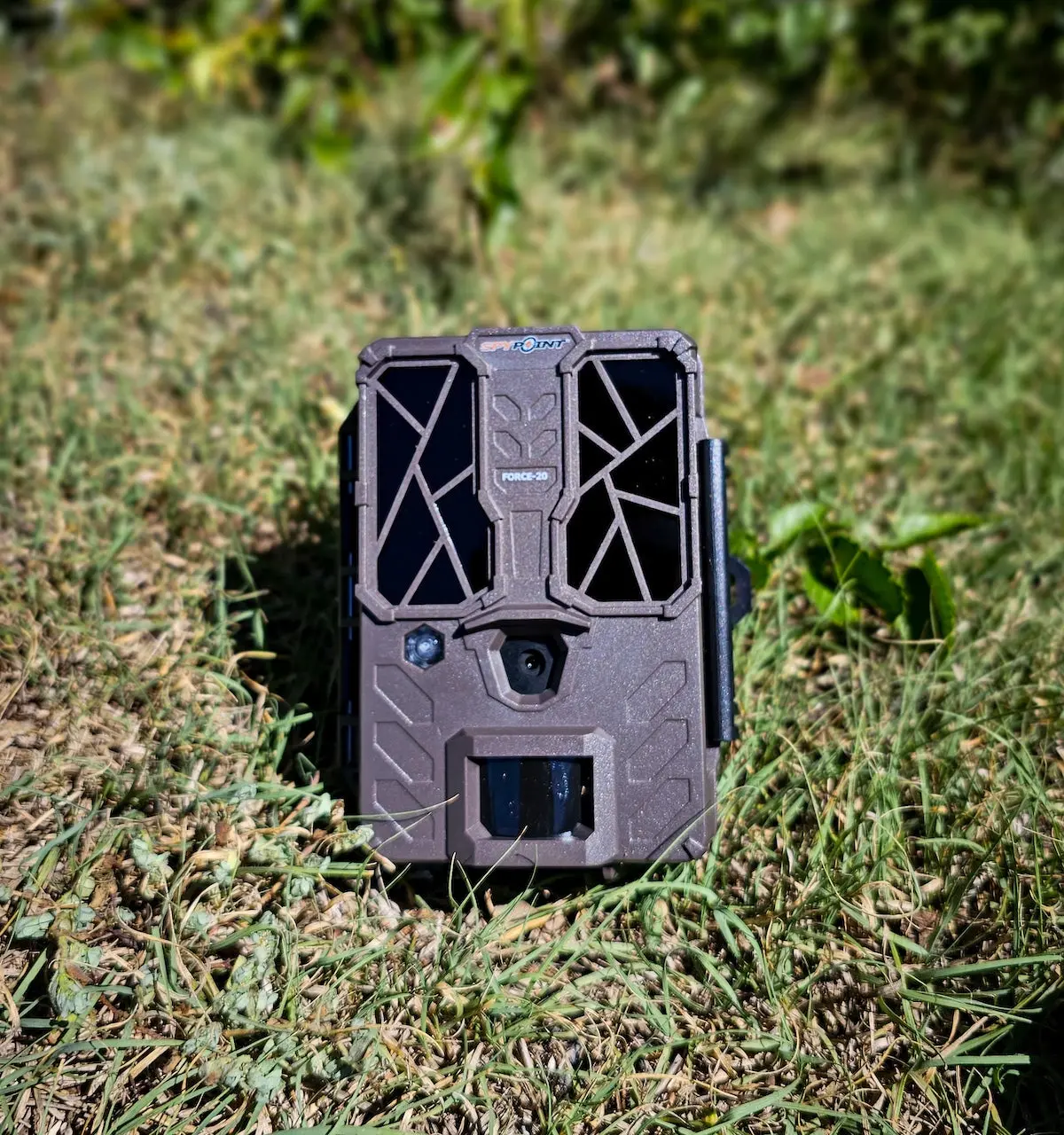
The exterior of the SpyPoint Force-20 is rugged and tough—it’ll hold up in any conditions. Bethany Beathard
The camera’s durable construction ensures it can withstand the rigors of outdoor use and changing weather. Whether patterning game or simply scouting the area, the SpyPoint Force-20 is a dependable choice for hunters looking to gain valuable insights into wildlife patterns and behavior. Bonus: It comes with the brand’s “know you’re covered warranty,” which is one of the best in the business.
Best Under $100: Stealthcam Prevue 26
Best Under $100
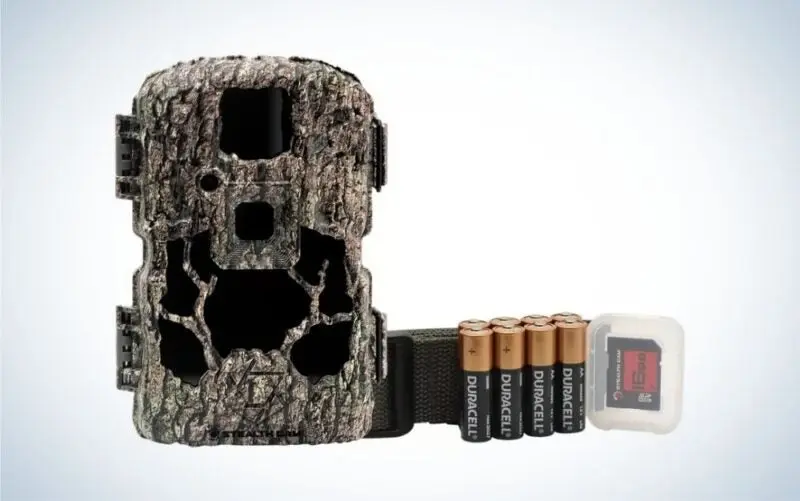
Specs
Trigger Speed: 0.4 seconds
Detection Range: 80 feet
Flash Range: NA
Flash Type: IR
Camera: 4, 8,16-26 MP (adjustable)
Pros
Good trigger speed
Adjustable resolution
Option for solar power
Cons
IR flash will result in blurrier night pics
Stealthcam’s expertise in the industry is evident with the Prevue 26, a camera that strikes an impressive balance between performance and affordability. After testing the Stealthcam Prevue 26 trail camera on my hunting land, I can confidently recommend it as an excellent option for budget-conscious hunters. Despite its affordable price tag, at under $100, this camera offers impressive features and performance. Its compact and lightweight design makes it easy to carry and install in the field.
During my testing, I found that the Prevue 26 delivers clear images with its 26-megapixel resolution and a fast trigger speed that captures game quickly. I like the option to adjust the resolution (experience has taught me that lower is generally better, but it’s best to experiment and see what your camera likes best), and there’s a generous- and color-viewing screen in the back for in-field picture review. The infrared technology ensures reliable nighttime shots; however, the infrared flash may disturb wildlife.

A cool feature of this Stealthcam trail camera is that it can run on either solar or battery power. Bethany Beathard
I really appreciated that it comes with batteries included, so it’s ready to go right out of the box. But more notably, the Prevue 26 offers the purchase option of adding the Stealth’s SOLPAK, a solar power source. It’s a $69.99 investment that can save you a significant amount on batteries in the long term. If you’re on a budget but still demand reliability and quality in a trail camera, the Stealthcam Prevue 26 won’t disappoint. It’s an affordable yet dependable scouting tool.
Best No Glow: Bushnell Core S-4K No-Glow
Best No Glow

Specs
Trigger Speed: 0.2 seconds
Detection Range: 75 feet
Flash Range: 110 feet
Flash Type: No-glow
Camera: 30 MP
Pros
Blazing trigger speed
Good detection range
Excellent flash range
Cons
Higher price tag for a budget model
The Bushnell Core S-4K No-Glow trail camera truly shines as the best no-glow option for stealthy wildlife monitoring. Like all Bushnell products, I confidently vouch for its outstanding performance and quality.
The no-glow infrared LEDs ensure that wildlife won’t be alerted to the camera’s presence, allowing for discreet nighttime captures. This feature played a crucial part for me, especially in the summer, as warmer temperatures in Oklahoma cause a lot of the deer to be active at night. This camera has increased my knowledge of wildlife activity and patterns. The design also nicely camouflages the trail camera with its surroundings.
What sets the Core S-4K apart is its remarkable 4K video resolution and 30-megapixel image quality, delivering exceptionally clear and detailed footage. The trigger speed is impressively fast, ensuring you never miss a crucial moment. Its durable build can withstand the harshest outdoor conditions. While it’s not the most budget-friendly option, the Bushnell Core S-4K No-Glow is a top choice for hunters and wildlife enthusiasts who demand the best in stealth, image quality, and reliability for their game scouting needs.

This Bushnell trail camera has some of the best image resolution we’ve seen. Bethany Beathard
In terms of value, it is on the higher-end budget cameras. However, I’ve yet to come across a faster trigger than what the S-4K offers at its price point. The 4K video quality it delivers is exceptionally crisp and detailed. Even more impressive is the nearly unparalleled detection range for a no-glow model. The camera comes with three preset modes, simplifying the setup for most users. Additionally, Bushnell’s inclusion of a two-year limited warranty adds to the overall peace of mind when investing in the S-4K.
Best for the Money: Browning Dark Ops Extreme
Best for the Money
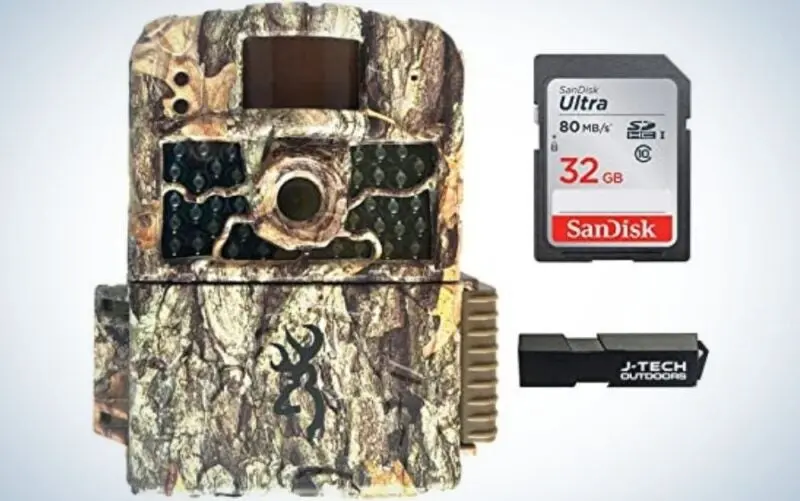
Specs
Trigger Speed: 0.3-0.7 second (adjustable)
Detection Range: 80 feet
Flash Range: 100 feet
Flash Type: Infrared
Camera: 18 MP
Pros
Very good trigger speed
Nice video
Small profile3
Cons
Upper end of the “budget” price point
Browning has been doing trail cams right for many years, and they carry that quality from their high-end models right down to more affordable ones. Their Dark Ops Extreme model is particularly impressive; the adjustable trigger (which on the low end is super-fast for a budget cam) allows adjustment for areas where speed isn’t so critical (mineral licks or mock scrapes), which can save on battery life. Exceptional video on this model for the price and a very impressive detection range for a no-glow camera. This Browning also sports a very small profile (4-¼” X 3”) for such a big-performing camera.
How We Tested Trail Cameras
What do you shop for when looking for a budget trail camera? The same qualities you would look for in a more expensive model, but with realistic expectations. Sure, you may not get the tack-sharp pics or lightning-fast trigger speeds of a Cadillac camera, but you can still buy a perfectly serviceable camera at a price that will still let you take your family out for dinner once in a while (or, of course, have leftover money for other hunting gear).
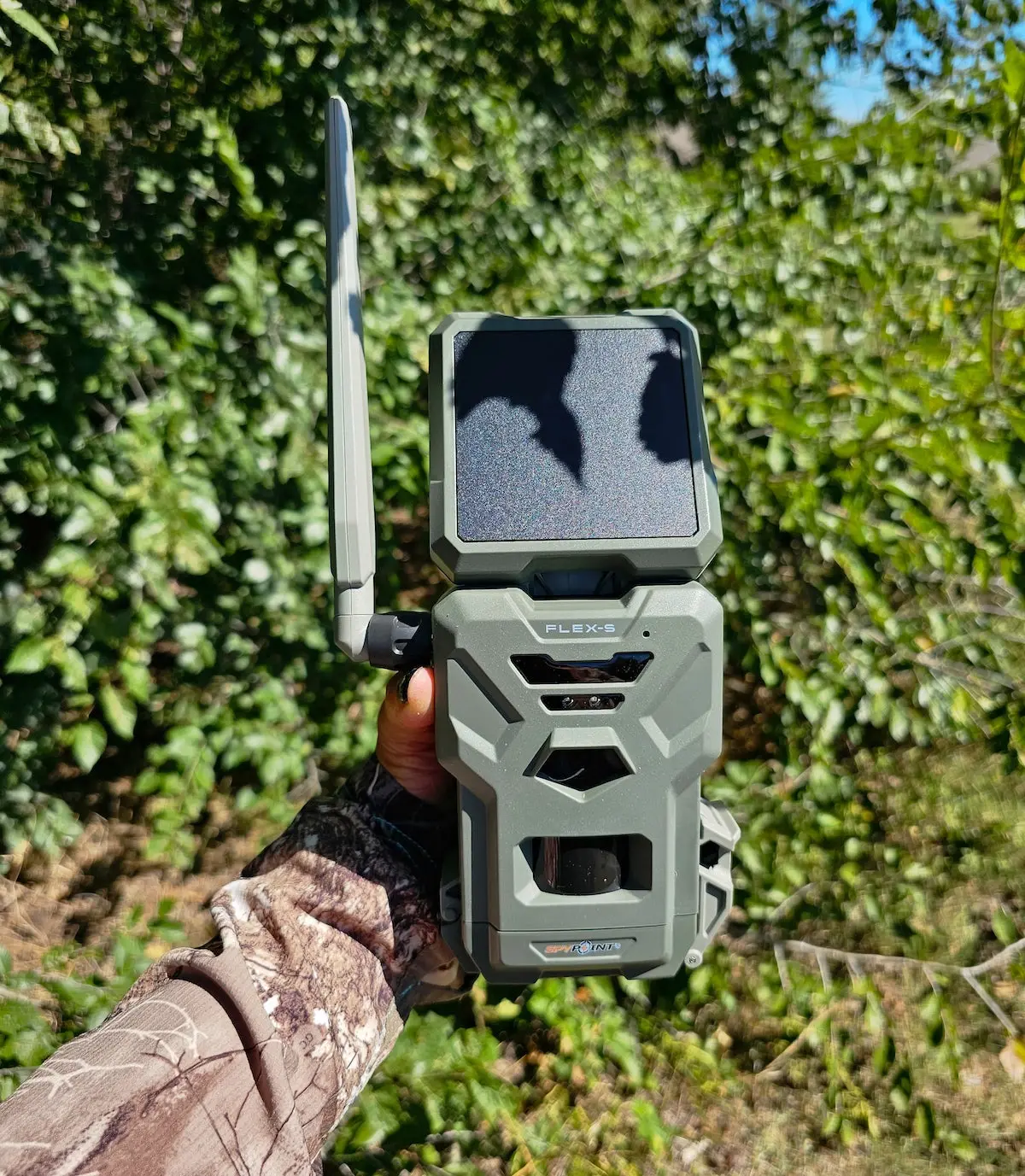
We tested trail cams from top brands like Moultrie, SpyPoint, and Bushnell. Bethany Beathard
In addition to using trail cams on a year-round basis for scouting game, I’ve tested them for Field & Stream for several years. I’ve used cameras from most of the major manufacturers and hunt with several buddies who are also avid trail cam users; their input and feedback help me make good choices and informed opinions when selecting trail cameras.
Trail Camera Buying Guide
The most important consideration when buying a camera
is your budget. We all want high quality and top performance, but often that means spending more money than we have. We’ve tried to pick cams that represent a range of prices in the “budget” category, so choose the one your wallet can handle. Second, don’t be afraid to check out word-of-mouth experiences from folks who’ve tried the model you’re considering, especially when it comes to customer service. Experienced cam-users can save you a lot of head-scratching when it comes down to choosing the best model for you. Here are some other factors to consider.
Trigger Speed
The trigger speed of a trail camera is the elapsed time between a camera’s sensor detecting game and when it actually snaps a picture. Generally, the faster the speed, the better, especially when your camera setup
is likely to capture a moving animal.
Detection Range
The camera’s detection range is the furthest distance at which a camera can detect an animal and trigger a picture in daylight conditions. As a rule of thumb, the greater the distance, the better, as the camera will simply detect more game.
Flash Range
Like detection distance, the flash range of a camera is the maximum distance at which the flash can illuminate the subject for a clean shot. This range can be affected by the type of flash the camera employs (see below).
Flash Type
Standard white flash is the only kind that shoots color at night and typically results in the sharpest pictures. But white flash is also the brightest and may spook game. Red-glow flash is less detectable by wildlife, but the pics are black and white. No-glow is nearly invisible to wildlife (and people, if you also use the camera for security purposes), but flash range and picture quality often take a hit. Deciding which is best depends on your intended use of the camera.
Megapixel (MP) Rating
It’s common for manufacturers to tout their high-megapixel cameras and for buyers to be wowed, as in “an 18MP camera is over four times better than a 4MP model.” Companies can tweak their camera’s resolution by an interpolation process, where the camera’s original megapixels are enhanced or multiplied by the camera’s software. Without getting uber-technical, this process impacts the clarity of the photos.
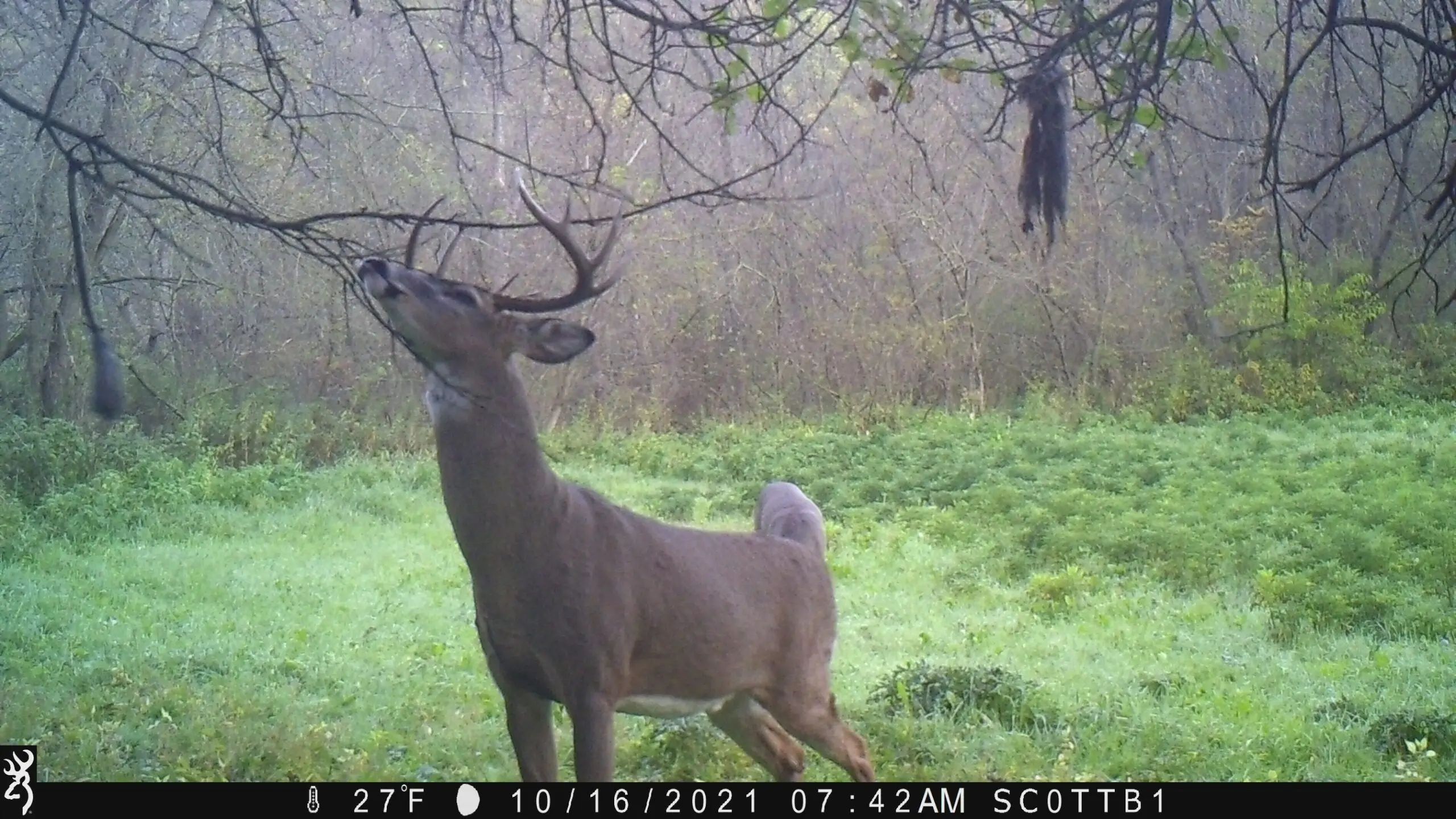
I’ve tested plenty of trail cams over the years in search of the best picture. Scott Bestul Scott Bestul
Since manufacturers tout the megapixel rating, we’ll do it too. But fair warning; do some snooping to see examples of photos taken with the camera to get a true idea of image quality.
FAQs
Q: Can you use a trail cam as a security cam?
You can absolutely use a trail cam to guard your home, business, or property. Any good camera will capture pics of a trespasser or thief as easily as it does wild game. However, it’s wise to use a no-glow, or infrared model, as any flash projection would likely be detected by a trespasser, who will do his best to steal or disable your camera. It’s also a good idea to mount the camera discreetly to lessen the chances of its detection; I like to mount them above a person’s line of sight, pointed down at a likely point of entry, such as a door or gate. If that’s not possible, do your best to camouflage the camera instead of mounting it in a highly visible spot where the bad guys can see it.
Q: Will a trail camera pick up a mouse?
Cameras take pics whenever the sensor detects heat or motion, so yes, any moving object will trigger the camera. In fact, one of my favorite tests of a camera’s trigger speed is to mount it by one of my bird feeders. Since birds are in constant motion, the camera’s ability to take quality pics of these tiny, ever-moving “targets” says a lot about its quality. And while most of us set cameras out in hopes of getting photos of a big buck, I enjoy looking at all the non-game critters out there too. Some of my favorite pics from last season included two different bobcats, a fisher, a grey fox, and an owl.
Q: What cameras have the best battery life?
With a few exceptions, most modern cameras have pretty decent battery life. But you can do a whole lot to keep your cameras running for months. First, use lithium batteries instead of the traditional alkaline. Yes, lithiums are more expensive, but they’re worth the few extra bucks you’ll spend upfront and result in extended performance. Rechargeable batteries are another option but require a more substantial initial investment; if you’re on a tight budget, lithiums are the way to go.
Second, keep the battery chamber free of dust and dirt and use an emery cloth to keep battery contact points clean and free of oxidization. I like to stick a dryer sheet in the battery compartment to ensure ants don’t crawl in and short out the system (yes, this has happened to me more than once). If your camera is in a remote location that you can’t often access, keep it in “picture” instead of “video” mode. Videos are cool and uber fun to watch, but they are super hard on battery life. I can get months of performance from a cam in picture mode; that same unit set on video will be lucky to last a couple of weeks.
Why Trust Us
For more than 125 years, Field & Stream has been providing readers with honest and authentic coverage of outdoor gear. Our writers and editors eat, sleep, and breathe the outdoors, and that passion comes through in our product reviews. You can count on F&S to keep you up to date on the best new gear. And when we write about a product—whether it’s a bass lure or a backpack—we cover the good and the bad, so you know exactly what to expect before you decide to make a purchase.
![Field & Stream [dev]](https://images.ctfassets.net/fbkgl98xrr9f/1GnddAVcyeew2hQvUmrFpw/e4ca91baa53a1ecd66f76b1ef472932b/mob-logo.svg)






